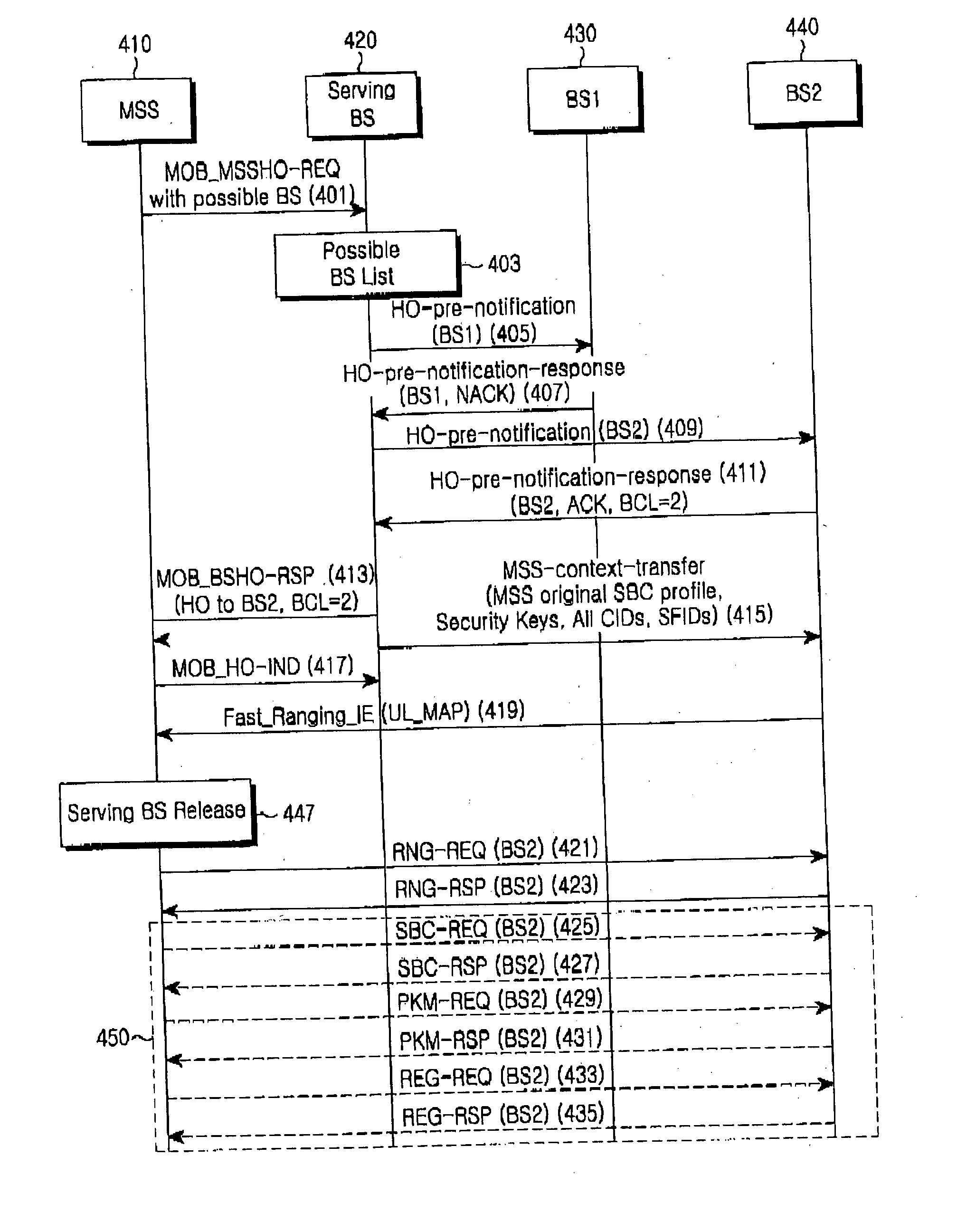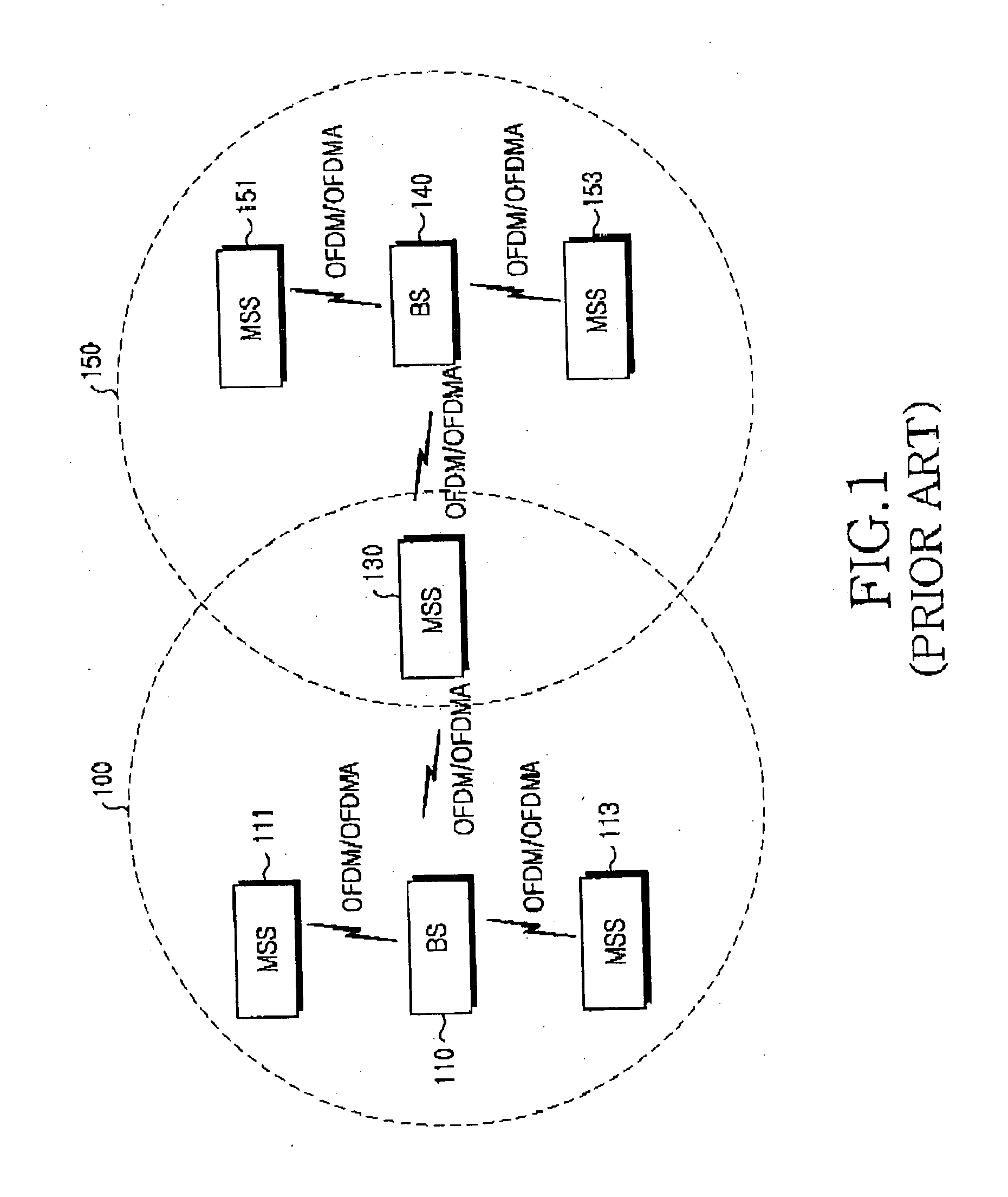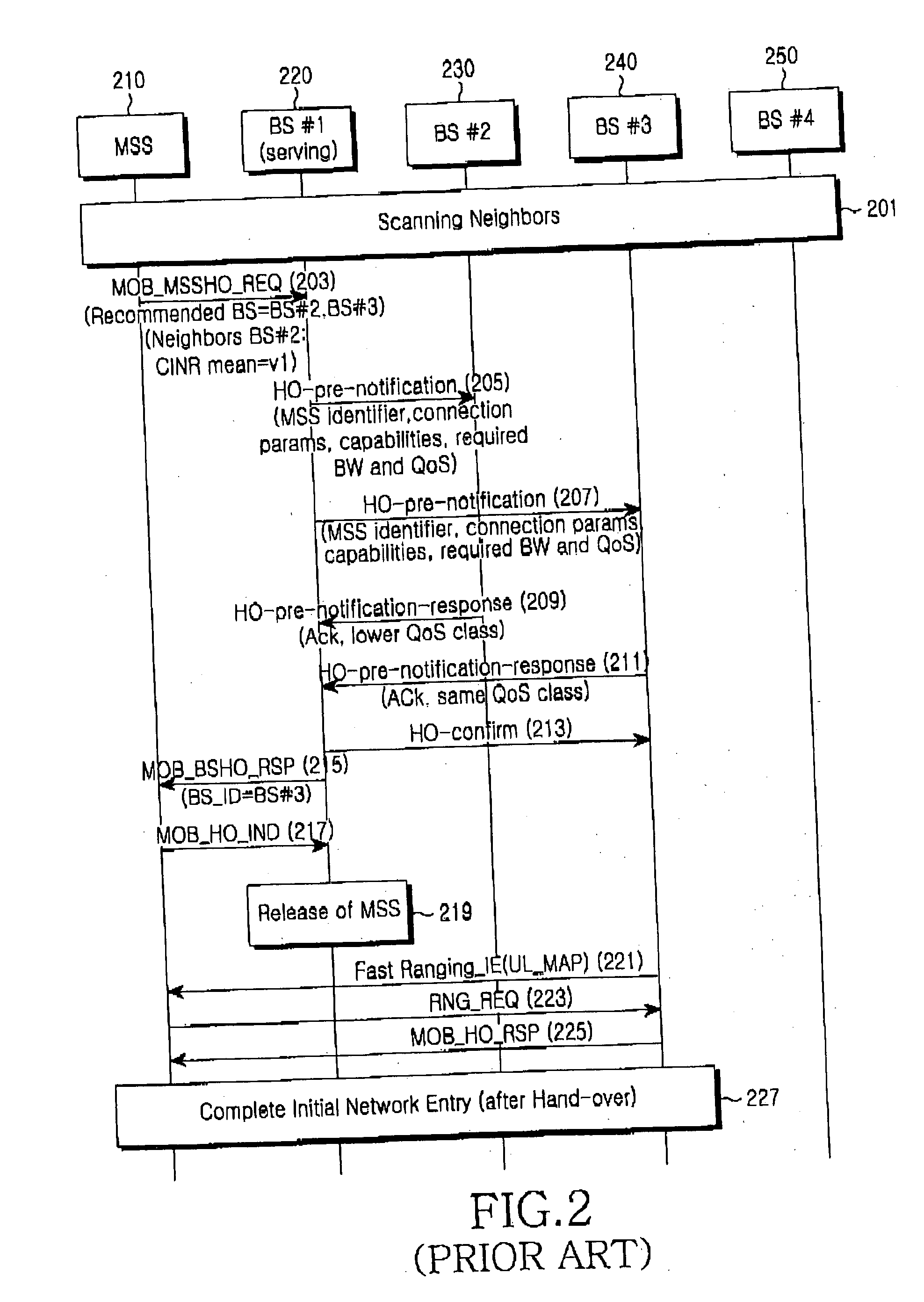System and method for optimizing handover in mobile communication system
- Summary
- Abstract
- Description
- Claims
- Application Information
AI Technical Summary
Benefits of technology
Problems solved by technology
Method used
Image
Examples
Embodiment Construction
[0034] Hereinafter, a preferred embodiment according to the present invention will be described with reference to the accompanying drawings. In the following description of the present invention, a detailed description of known functions and configurations incorporated herein will be omitted when it may make the subject matter of the present invention unclear.
[0035] The present invention proposes a solution for improving a handover process in a Mobile Broadband Wireless Access (MBWA) system. That is, the present invention proposes a solution for optimizing a handover process in order to improve handover performance in a MBWA system. For such optimization, the present invention proposes a stepped backbone communication and polling mechanism and defines a signaling process and message for realizing them.
[0036] The backbone communication according to the present invention includes three levels, that is, a first-level (Level 1) backbone communication, a second-level (Level 2) backbone...
PUM
 Login to View More
Login to View More Abstract
Description
Claims
Application Information
 Login to View More
Login to View More - R&D
- Intellectual Property
- Life Sciences
- Materials
- Tech Scout
- Unparalleled Data Quality
- Higher Quality Content
- 60% Fewer Hallucinations
Browse by: Latest US Patents, China's latest patents, Technical Efficacy Thesaurus, Application Domain, Technology Topic, Popular Technical Reports.
© 2025 PatSnap. All rights reserved.Legal|Privacy policy|Modern Slavery Act Transparency Statement|Sitemap|About US| Contact US: help@patsnap.com



